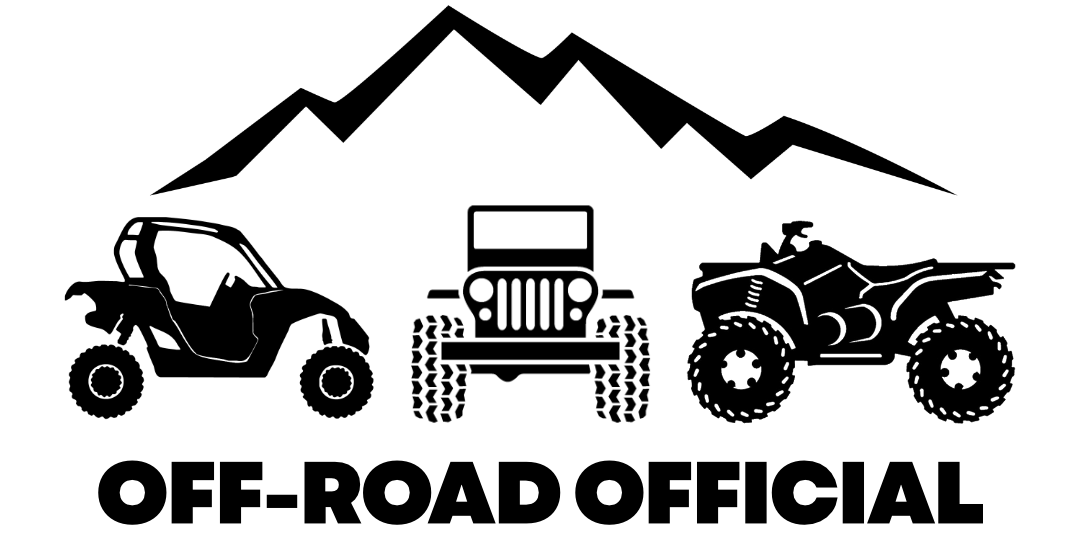The CFMoto CForce 400 is viewed as one of the better values on the ATV market.
Reading through CFMoto CForce owner reviews, most seem overly happy with the performance they get from this machine, especially considering the budget price.
But there are some drawbacks with this machine as well, in the form of five common CFMoto CForce 400 problems.
CFMoto CForce 400 Problems
The most common CFMoto CForce 400 problems are:
- Vapor lock stalling issues
- Poor throttle response
- Exhaust heat uncomfortable on right leg
- Engine failing to start
- Overheating
Read on for more detail on each of these issues, including the why they occur and proven ways to overcome them.
Vapor Lock Stalling Issues
The most common problem with the CFMoto CForce 400 is with vapor lock, which the CForce 500 and CForce 800 suffer from as well.
This happens as gas occasionally sloshes into the vent line for the fuel tank and cuts off the air supply, which then chokes the engine out and leads to stalling.
This vapor lock can be temporarily corrected by loosening the gas cap and relieving the pressure build-up, but will happen repeatedly until both the EVAP System and fuel tank vent line are adjusted.
Fixes
Bypassing The EVAP System
In order to comply with EPA emissions regulations for the state of California, CFMoto installs an EVAP System to prevent fuel vapors from the fuel tank from escaping into the atmosphere.
Unfortunately, this EVAP System is the main source of these vapor lock issues, and it is recommended that owners located outside of California bypass and delete the EVAP system to correct this.
To bypass the EVAP system, locate the vacuum hose that runs from the throttle body of the machine to the EVAP canister in the rear cubby of the machine that is covered by the tail light lid.
This vacuum hose should be located in the engine compartment on the left-hand side of the machine beneath the seat area. Disconnect this vacuum hose from its throttle body connector, which also disconnects the canister.
You can remove the hose and the canister altogether or leave them in place but disconnected.
Adjusting the Fuel Tank Vent Line
Next, you’ll need to unplug the vent line for the fuel tank. In doing this, you’ll find a one-way check valve on the end of the vent line.
Remove the valve, and then redirect the unplugged vent line down towards the bottom of the machine so that the opening hangs above the ground and no other parts. This will enable the vent line to breathe properly and overflow any gas that may find its way in.
Disabling the EVAP System and adjusting the vent line should permanently correct these vapor lock issues.
Poor Throttle Response
Another common issue in the CForce 400 is poor throttle response, which seems to be a theme among most of the CFMoto CForce models.
This is especially noticeable in high gear, where riders may find that when fully throttling the machine, there’s not much added response out of the engine and the RPMs stay lower than they should affecting the CForce’s top speed.
This essentially makes high gear useless in many cases and leads to owners leaving the machine in low gear much of the time.
While throttle response in low gear is solid, riders do still find that they don’t have as much low end power as they would expect and the ride can feel a little bit jerky at times.
The poor throttle response and jerkiness are likely the result of flaws with the stock clutch system. This clutch also causes issues in the CFMoto UForce models and CFMoto ZForce models.
Fixes
Upgrading the primary clutch with new weights and a new spring will help alleviate the issues the stock clutch causes. Owners can purchase an aftermarket clutch kit that contains these upgraded components, or purchase and install them on their own.
Additionally, the secondary clutch can be reclocked to a different setting to increase throttle response and relieve any jerkiness. The secondary clutch has an adjustable spring with three different letter settings and four different number settings.
The CForce 400 should be factory set to the B1 setting. For better overall performance and less jerkiness, it is recommended that owners adjust to the C1 or A1 setting.
Exhaust Heat Uncomfortable on Right Leg
Owners who run their machines in low gear at slower speeds consistently may find that the side of the CForce 400 where the exhaust pipe vents may become incredibly hot from the exhaust heat.
This heat will warm the outer plastic shell and plastic fuel tank cover to the point that riders may not be able to keep their leg close to the machine without burning it.
Fix
To alleviate this, you should install titanium heat wrap around the exhaust pipe. This should result in much less heat warming the plastic shell and a more comfortable ride for the legs.
The CForce 600 is known for excessive exhaust heat to bother riders’ legs as well.
Engine Fails To Start
A number of owners of the CForce 400 have reported experiencing their engine not starting at some point. This is likely due in part to one of the following:
- Terminals/Wiring
- Battery
- Valves
- Spark Plugs
Whether your store your CForce inside or outside, you should really be covering it with a durable ATV cover while not in use for extended periods, which is the best way to ensure you don’t run into no-start issues.
Causes & Fixes
Terminals/Wiring
The battery terminals are the first place to start inspecting if your engine won’t start, as they’re a leading cause of this issue and will save you the headache of making replacements anywhere else before realizing it’s just a connection issue.
Make sure the terminals are not corroded and are free of debris, giving them a good cleaning even if they don’t seem to need it.
Applying Permatex dielectric grease will prolong the lifespan of battery terminals and cut down on starting issues.
Be sure to check the grounding wires that connect the battery as well.
Battery
The stock battery in the CForce 400 is known to drain rather quickly when not in use or if connected to aftermarket electronics like light bars or sound bars.
I highly recommend that you connect your battery to a battery tender when not in use, and the Battery Tender Plus is what I use.
Test the battery to be sure it’s getting 12+ volts. If not, the fuel injection likely won’t work properly.
Make sure all battery cables are tightly secured in place and try recharging the battery if the voltage is low.
Valves
The intake and exhaust valves are another common source of no-start trouble with the CForce 400. The valves can either tighten or loosen too much and cause compression loss.
In either instance, your valve clearance will be affected, leading to compression loss and the quad not starting properly.
Find your proper valve clearance in the owner’s manual and check to ensure that both valves are set correctly.
Spark Plugs
If your spark plugs are coated with a foreign substance like oil or coolant, they likely won’t function properly.
Make sure this isn’t the case, and check the tips of the spark plugs to ensure they aren’t a blackish or grayish color which would indicate spark plug fouling.
If the spark plugs are fouled, you can be pretty this is your issue. Replace them with a high quality iridium spark plug for peak performance.
Overheating
The CForce 400 is also prone to overheating, which can occur for a number of reasons.
- Radiator is clogged
- Radiator fan not activating
- Air pocket blockage in coolant system
- Head gasket is blown
Causes & Fixes
Radiator Is Clogged
If you ride your CForce 400 off-road mostly, your radiator is prone to becoming clogged with mud, dirt, sand, and grass over time.
When this happens, it will lead to overheating. To avoid this, be sure and clean your radiator and grill on a frequent basis, especially after rides through thick mud.
For extreme clogs, you should remove the grill and soak it in Simple Green All-Purpose Cleaner, spraying any remaining mud or dirt out afterwards.
Radiator Fan Not Activating
The CForce 400’s ECU is pre-installed for the radiator fan to not trigger until the engine reaches temps of somewhere around 215+ degrees.
The engine should be fine at these temps, many times the fan doesn’t trigger in time to actually keep the engine at 215 degrees or less once at that point.
This leads to overheating, and is especially problematic for those who live and rider in warm locations or at higher elevations.
The best way to combat this is to have the ECU tuned or flashed, which will usually reprogram it so that radiator fan engages at a much lower temperature of around 190 degrees.
This should knock out the overheating issue your CForce may be experiencing.
Air Pocket Blockage In Coolant System
Another common cause of overheating in this model is an air pocket forming in the coolant system, which will prevent the coolant system from efficiently pumping coolant and lead to overheating.
An air pocket usually forms if your radiator fan is not triggering in time and your engine is overheating.
If you’ve got air in your coolant system, the engine will suffer from overheating until you bleed this air from the system.
Head Gasket Is Blown
When your CForce engine overheats, it puts the head gaskets at risk of blowing. And once a head gasket blows, it will lead to continuous overheating.
If you suspect you’ve got a blown head gasket, you can purchase a head gasket test kit to confirm or simply go ahead and replace it to be sure.
Parting Thoughts
In summary, the most common CFMoto CForce 400 problems are vapor lock stalling issues, poor throttle response, exhaust heat uncomfortable on the right leg, the engine failing to start, and overheating.
Fortunately, these issues can be overcome by some simple modifications and mechanical work.
For more on CFMoto, check out the following guides before you go:


